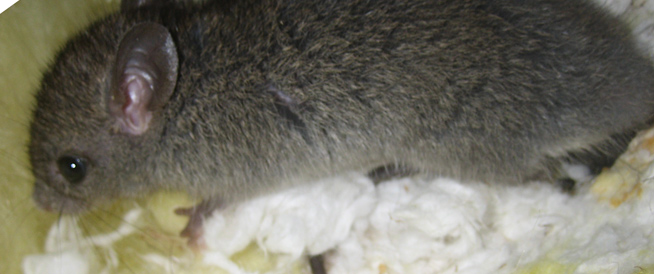Rats, just like a whole host of wild animals, communicate with each
other, but instead of doing it through the medium of vocal sounds, rats
use something else - pheromones. These pheromones are signals, chemical
signals, of sorts, and they are designed to bring about a response in
the animal that receives the pheromones that have been left behind by
others.

Rats will leave a urine marking with pheromones. This can attract other rats, such as when a female rat is ready to mate, for example, but it can also be used as a sign to other rats that one rat already lives there. It could be a sign of territory. The same urine and pheromones are also a way for a mother rat to communicate with her babies. The change in the scent lets the young know that she is ready to nurse.
When male release pheromones, they are even more potent than the ones that the females release, and when the male rats are ready and raring to go, they will produce more of the pheromones to drive the female rats crazy. They use this when the rat population has been culled and they need to “up” numbers quickly. Females will often go into mating overdrive, as such, and repeatedly mate with male after male to try and rebuild colony numbers once again.
Go back to the Rats in the Attic home page.

Being the strong survivalist little creatures that they are, rats have a secret way to communicate with each other that no other species can decode. Aside from their squeaks and chirps, they exchange information by means of chemical signals called pheromones. Humans did not even know about this until recently. Now that we do, we have a better understanding of just how resourceful and resilient these rodents are.
Whether you are dealing with a rat infestation on your property or you are just plain curious about this secret rat language, you’re in for a good amount of fun facts. To start off, let’s discuss what exactly pheromones are.
What are pheromones?
In general, pheromones are chemicals being secreted or excreted to stimulate a response or impact the behavior of the receiving member of the same species. It is a chemical but it is capable of acting as a hormone outside the body.
In the case of rats, pheromones are used to exchange a wide range of information including the presence of a predator, the location of a food source, and safe shelter, as well as the need for mating and sex. This means of communication is used by rats all throughout the day for their entire lifetime. It could be the reason why they are very successful in spreading out their species across the world despite the many ways humans try to get rid of them. This secret code is their weapon and strongest defense against any threat or danger.
Male rats use pheromones to exert their dominance among other males rats and their female counterparts. Females, on the other hand, take advantage of this hormone-like chemical as a tool to help them identify a suitable mate.
How do pheromones work among rats?
Not to sound too geeky, but let’s discuss exactly how pheromones work among rats. They have a highly sensitive sense of smell - thanks to their sinus membranes called epithelium tissues. Rats also have a vomeronasal organ (VNO) which acts as an auxiliary olfactory organ. This VNO is a high-power receptor that takes in the scent of the pheromones and relays the information to the brain.
Once the information gets to the brain, it triggers responses in the receiver. It is important to note that while pheromones are a powerful means of communication among members of the same species, it only works on animal responses to stimuli and nothing more.
Two types of pheromones in rats
Not all pheromones have the same function. They are divided into two main types: communication through primer and communication by information.
First is communication through primer which deals with main reactions such as danger, hunger and thirst, dominance, fear, and sex. This is meant for the more serious stuff relating to the animal’s survival.
The second type is called communication by information. It provides more specific information such as an exact location including where the predator is or where the food is. It can also answer simple questions answerable by yes or no. For example, the question of whether or not the other is healthy or injured. This type of pheromone also works for less serious and more social exchanges such as what the other just ate, and where they should go next.








